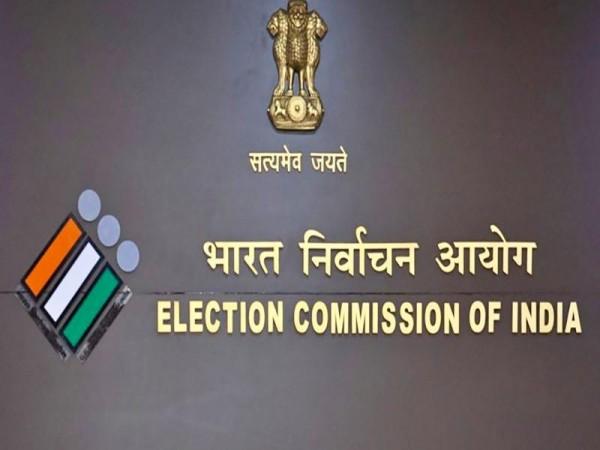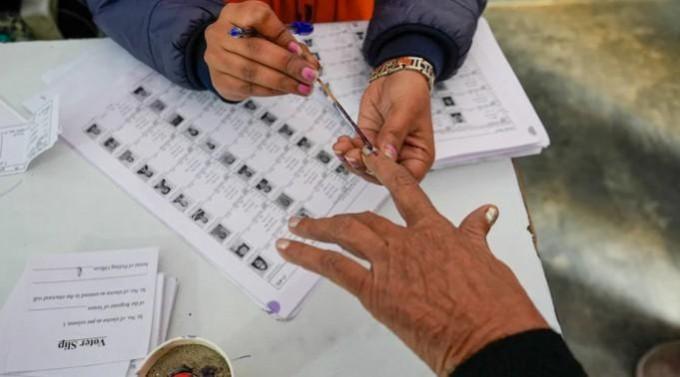
On the eve of Bihar's next assembly elections, a silent storm is brewing beneath the surface of its democracy. It is not the clamor of rallies or the roar of political slogans, but the cold arithmetic of voter exclusions. According to official disclosures by the Chief Electoral Officer (CEO) Bihar, 6.5 million voters have been excluded from the rolls following a massive "Special Intensive Revision" (SIR) of electoral rolls ordered by the Election Commission of India (ECI). Out of a total of 7.89 crore electors, this translates to 8.24% of the state's electorate—a figure that can radically alter outcomes in hundreds of constituencies.
The real danger is not just in the aggregate numbers but in the seat-level vulnerabilities these exclusions create. When matched with the razor-thin victory margins of Bihar's 2020 assembly elections, the magnitude of the risk becomes starkly visible: a relatively small administrative action has the potential to upend electoral mandates and raise questions of legitimacy.
A State Under Voter Siege: Facts and Figures
The raw numbers speak for themselves:
Total electors (2024, pre-revision): 7.89 crore (Format-2B, CEO Bihar).
Voters excluded in SIR: 65,00,000 (official).
Statewide exclusion rate: 8.24% (6.50m ÷ 78.9m).
In 2020, Bihar saw many seats decided by wafer-thin margins, some as low as 12 votes.
According to ADR (Association for Democratic Reforms) data:
23 seats were won by margins of under 1,000 votes.
5 seats were won by less than 100 votes.
The single narrowest victory was in Hilsa (Nalanda district), where the winning candidate scraped through with a margin of just 12 votes.
These numbers are critical because an average 8.24% exclusion rate, when applied to constituency-level elector totals, produces exclusion counts several hundred times greater than previous victory margins in many constituencies.
Consider this:
Hilsa – Total electors: 1,65,580 → Estimated exclusions: 13,648 → Margin in 2020: 12 votes.
For every single vote that decided Hilsa last time, over 1,137 electors may now be excluded.
Barbigaha – Electors: 1,20,166 → Estimated exclusions: 9,902 → Margin: 113 votes. Nearly 87 voters excluded for every vote that decided the seat.
Ramgarh – Electors: 1,79,266 → Estimated exclusions: 14,778 → Margin: 189 votes. Almost 78 times the margin.
When these ratios are visualized across Bihar's 243 assembly constituencies, the pattern is alarming: in over 50 constituencies, even a state-average exclusion rate is enough to exceed 2020 margins by 10 to 100 times. If exclusions are concentrated as past experience with targeted deletions suggests the scale of disruption could be catastrophic.
Seat-Level Vulnerability Matrix: Where the Democracy is at Risk
To assess the risk systematically, we constructed a Seat-Level Vulnerability Matrix by joining three authoritative datasets:
- CEO Bihar's Format-2B constituency-wise elector totals.
- ADR Bihar 2020 election report - victory margins and winners.
- ECI/CEO exclusion reports – aggregate deletion counts (district-wise).
Each constituency was scored using the formula:
> Vulnerability Ratio = Provisional Excluded Voters ÷ 2020 Victory Margin
Priority Classification:
High: Ratio ≥ 5 (exclusions ≥ 5× the prior margin)
Medium: 1.5 – 5×
Low: < 1.5×
Top 5 Most Vulnerable Seats (Provisional)
Rank Constituency District Electors (2024) Est. Excluded at 8.24% 2020 Margin Vulnerability Ratio Priority
- Hilsa Nalanda 1,65,580 13,648 12 1,137.3 HIGH
- Barbigaha Patna 1,20,166 9,902 113 87.6 HIGH
- Ramgarh Kaimur 1,79,266 14,778 189 78.2 HIGH
- Matihani Begusarai 2,07,048 17,080 333 51.3 HIGH
- Rajapakar Vaishali 1,52,215 12,546 1,796 7.0 HIGH
In these constituencies, even if half the estimated exclusions are reversed or reinstated through legal or administrative action, the outcome of the seat could swing entirely.
Why This Matters Beyond Bihar

This is not merely a state administrative issue. The implications ripple outward into national politics, federal governance, and global perceptions of India's electoral integrity.
1. National Parliamentary Impact:
Bihar sends 40 MPs to the Lok Sabha. If similar exclusion patterns persist into the next general elections, as few as 10 to 12 affected assembly constituencies per parliamentary seat could decide outcomes in Delhi.
2. International Reputation:
India is already under scrutiny for electoral transparency by global democracy watchdogs. Targeted deletions risk being portrayed as state-sponsored disenfranchisement, undermining India's standing as the world's largest democracy.
3. Internal Security Concerns:
Mass exclusions, particularly in border districts near Nepal and Bangladesh, risk fueling unrest. In Nalanda, Purnea, and Kishanganj, local tensions can quickly acquire a cross-border dimension, complicating national security.
The Mechanics of Exclusion: How It Happens
The SIR process was designed to clean up rolls by removing duplicates, deceased voters, and relocated individuals. However, implementation flaws and lack of transparency have created room for misuse.
Algorithmic Deletion Without Human Verification: Automated matching of Aadhaar and EPIC data can misclassify legitimate voters, especially women (whose names often change post-marriage) and migrants.
Partisan Targeting at Booth Level: In past elections, there is evidence of local officials selectively flagging opposition strongholds for deletion drives.
Absence of Adequate Notice: Many excluded voters only discover their status on election day, when it is too late to contest.
The ECI's own guidelines mandate door-to-door verification and public notice before deletions, but field reports indicate these steps were skipped in several districts. The scale of exclusions - 65 lakh voters suggests either a massive procedural failure or a deliberate strategy.
Operational Imperatives: What Must Be Done Now
Time is short. The election clock is ticking, and each day lost compounds the damage. A three-track emergency response is needed:
1. Legal and Institutional Action
File immediate Form-6/7 claims to restore excluded voters in top 50 booths per high-priority seat.
Demand public disclosure of deletion reason codes from EROs through RTI.
Consider writ petitions in Patna High Court to stay further deletions and mandate third-party audits.
2. Political Mobilisation
Train Booth Level Agents (BLAs) to verify rolls door-to-door in vulnerable constituencies.
Launch mass awareness campaigns (print, radio, WhatsApp) explaining how voters can check and restore their status.
3. Data Transparency
Publicly release a seat-by-seat exclusion dashboard, showing how deletions compare with 2020 margins.
Invite independent watchdogs like ADR to audit the process.
Historical Echoes: When Numbers Decide Nations
The current crisis echoes past episodes where voter list manipulation altered the trajectory of Indian politics. In 1977, mass disenfranchisement during the Emergency fueled public anger that swept the Janata Party to power. Today, the risk is subtler but no less dangerous: democracy can be undermined silently, through spreadsheets rather than lathis.
As Sir William Francis Butler once said, "The nation that will insist upon drawing a broad line of demarcation between the fighting man and the thinking man is liable to have its fighting done by fools and its thinking done by cowards."
Replace "fighting" with "voting," and the message is clear: a democracy that separates its numbers from its principles will one day wake up to find both hollowed out.
The Road Ahead: From Provisional Matrix to Final Defense
The provisional Seat-Level Vulnerability Matrix already highlights 25 constituencies at immediate risk, with Hilsa, Barbigaha, and Ramgarh topping the list. The next step is to process the district-wise booth-level exclusion files to create a final, authoritative CSV of all 243 constituencies, including:
- Total electors
- Actual excluded voters (reported)
- 2020 margins
- Priority classification
- Top 10 vulnerable booths per AC
Once complete, this will provide a battle map for legal and political action, ensuring every exclusion is challenged and every vote defended.
Call to Guard the Republic
Bihar's voter exclusion crisis is not a localized administrative hiccup; it is a test case for the health of Indian democracy itself. If 65 lakh voters can be silently erased, and if that erasure can flip constituencies without accountability, then every future election, state or national, stands on fragile ground.
The numbers are chilling, but they also offer a roadmap. By acting decisively now through law, mobilisation, and transparency, Bihar can turn this moment of peril into a reaffirmation of democracy. The stakes are nothing less than the sovereignty of the people's mandate.
[Major General Dr. Dilawar Singh, IAV, is a distinguished strategist having held senior positions in technology, defence, and corporate governance. He serves on global boards and advises on leadership, emerging technologies, and strategic affairs, with a focus on aligning India's interests in the evolving global technological order.]


![Too drunk to walk? Karnataka to drop heavily intoxicated revellers home, sets up rest centres for New Year crowds [Watch] Too drunk to walk? Karnataka to drop heavily intoxicated revellers home, sets up rest centres for New Year crowds [Watch]](https://data1.ibtimes.co.in/en/full/826552/too-drunk-walk-karnataka-drop-heavily-intoxicated-revellers-home-sets-rest-centres-new-year.png?w=220&h=135&l=50&t=40)


![Too drunk to walk? Karnataka to drop heavily intoxicated revellers home, sets up rest centres for New Year crowds [Watch]](https://data1.ibtimes.co.in/en/full/826552/too-drunk-walk-karnataka-drop-heavily-intoxicated-revellers-home-sets-rest-centres-new-year.png?w=220&h=138)


![Too drunk to walk? Karnataka to drop heavily intoxicated revellers home, sets up rest centres for New Year crowds [Watch]](https://data1.ibtimes.co.in/en/full/826552/too-drunk-walk-karnataka-drop-heavily-intoxicated-revellers-home-sets-rest-centres-new-year.png?w=220&h=135)


